What Not To Plant With Kale: An Easy Guide 2023
Figuring out what not to plant with kale was one of the biggest hacks I could ever make sense of to keep the kale in my garden alive.
I had been experimenting with keeping that vegetable alive ever since I got it and mind you, my friend, it was not easy for a newbie like me.
Why do you need to plant kale when you can get it at a mall anyways? And what is so great about kale, you ask?
Firstly, it is super expensive to get this crunchy vegetable at a mall because out of the blue, now everybody wants to eat this vegetable that has superpowers in it!
Secondly, did you know that kale is a super high vitamin K source? According to Harvard University, kale is not only high in vitamin K but also Vitamin C, vitamin A, and B6! All necessary to live a healthy life.
So, yes, I decided to grow them in the little garden I have in my backyard to save myself some pocket money.
And I also made this list of what not to plant with kale to save you the headache of experimenting and having heartache every time you see your leaf turn yellow!
If you do not have time to read the entire thing, I have prepared an easy companion planting chart for you to figure out what not to plant with kale and what you can plant with kale.
| What To Plant With Kale | What Not To Plant With Kale |
|---|---|
| Onions | Sunflower |
| Garlic | Strawberries |
| Leeks | Tree Of Heaven |
| Peas | Black Walnut |
| Pepper | Cabbage |
| Cilantro | Brocolli |
| Dill | Cauliflower |
| Lemongrass | Brussel Sprouts |
| Bok Choy | |
| Fennel | |
| Lettuce |
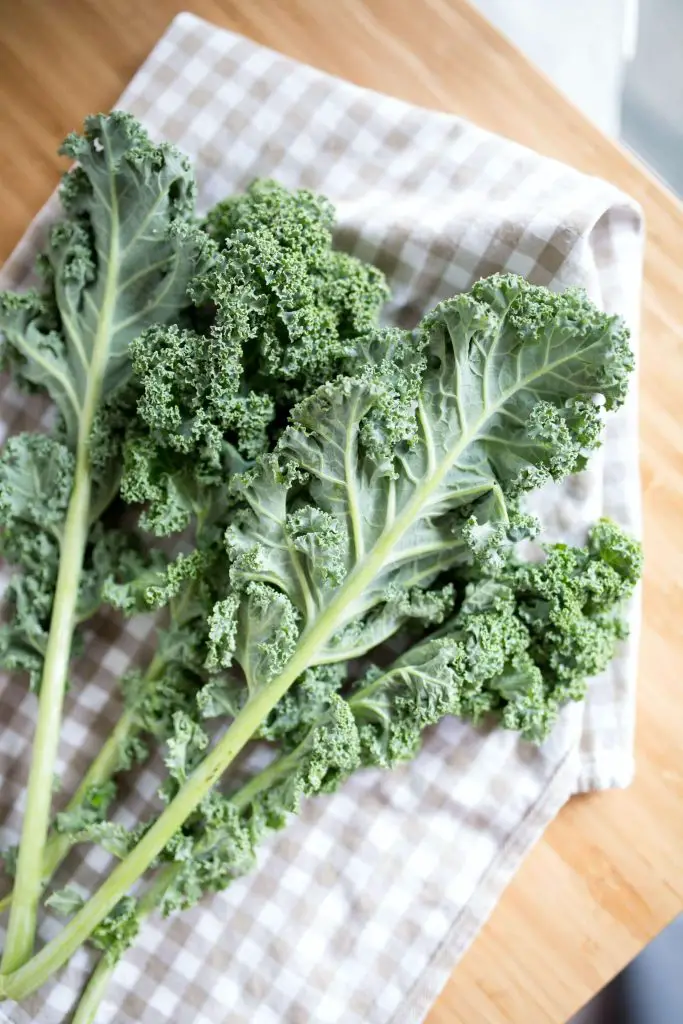
Affiliate Link Disclaimer
Some of the links on here are affiliate links and I may earn if you click on them, AT NO EXTRA cost to you. I hope you find the information here helpful! Thanks.
Related Posts
- How To Save A Dying Tomato Plant (+Growing Tips)
- Growing Tomatoes In Fabric Pots [Step By Step Guide 2022!]
- How To Trim Basil Plant Without Killing It & What To Avoid! [2023]
- 13 Best Kale Smoothies For Weight Loss You Have To Try!
What Not To Plant With Kale
1. Sunflower
The sunflower is an example of what not to plant with kale as they are a type of allelopathic plant.
Allelopathic plants release unhealthy chemicals to the plants around them. In this case, the chemicals released will affect the cellular absorption of kale seedlings and prevent them from sprouting.
Not only that, sunflowers can grow to be tall plants which will disrupt the sunlight flow to the kale growing underneath.
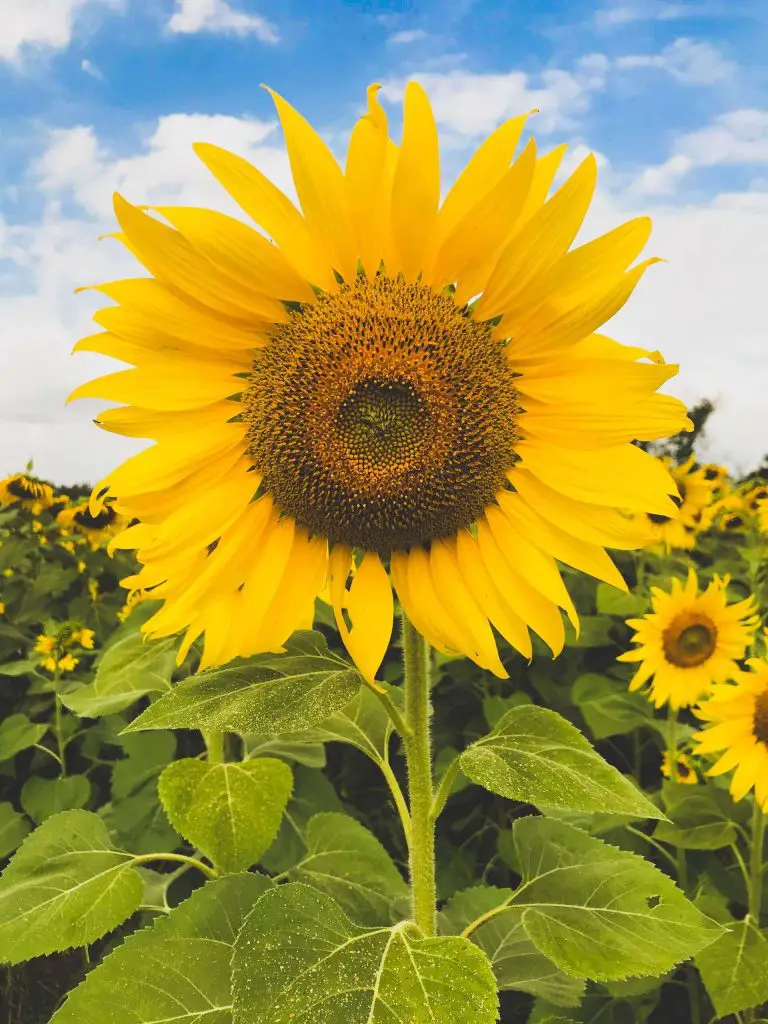
2. Cauliflower
This is another plant that is part of the brassica family which when planted next to kale may cause pest infections, so keep them away!
3. Strawberries
Kale and strawberries companion planting is never done for obvious reasons. This is because kale is prone to pest attacks and strawberries do not grow well around that kind of plant.
4. Brussel Sprouts
This vegetable is an example of what not to plant with kale because they attract pests such as aphids, whiteflies, and flea beetles.
Surprisingly, these pests are also attracted to kale and you do not want to be dealing with a whole lot of pest infestations, do you?
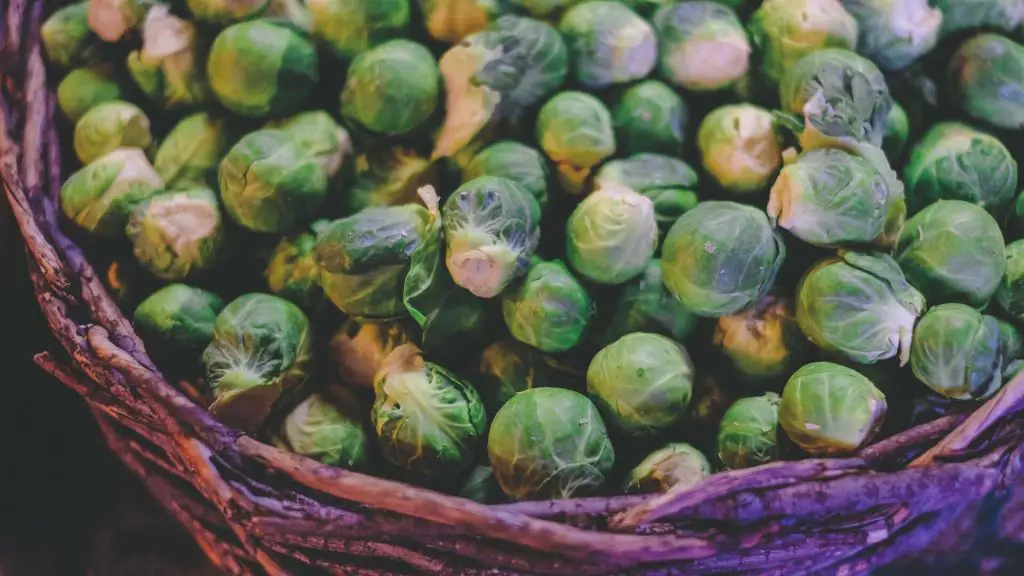
5. Tree Of Heaven
This particular plant is not the greatest to plant nearby any plant because it has phytotoxic chemicals. This chemical that exists in its bark and roots may inhibit the root growth of kale grown next to it.
As magical as the name may sound, Tree Of Heaven is actually a host for a disastrous pest called spotted lanternflies.
6. Cabbage
You would not want to plant cabbage next to kale as they belong to the brassica family which attracts similar pests to kale. You would have a double infestation of pests to deal with then!
7. Black Walnut
This is another example of an allelopathic plant. It releases a chemical known as juglone which kale is sensitive to. Your kale plant may experience yellowing of leaves, stunted growth, and eventually death if kept anywhere within 50 feet of the black walnut tree.
8. Brocolli
Companion plants for kale and broccoli are not ideal because broccoli, like kale, belongs to the same nightshade family. This means they share similar pests such as caterpillars and aphids.
Placing them together within proximity would just mean increasing their vulnerability to pest attacks.
9. Fennel
Fennel is another example of what not to plant with kale. Just like black walnut and the tree of heaven, fennel releases a chemical substance that affects the plant and root growth of kale.
If planted near kale, its development is affected and it produces undersized kale leaves.
10. Bok Choy
This vegetable should not be planted with kale because the pest that is normally attracted to it is also attracted to kale. Since they are both from the brassica family, you would want to grow them away from each other.

11. Lettuce
Lettuce is not the healthiest companion to be planted with kale. This is because it causes kale to suffer from a plant disease called blight.
It is a fungal infection that causes rust and smut on kale which will eventually cause the death of kale.
What Is Companion Planting?
Companion planting is the close planting of different types of plants to enhance each other’s growth or to safeguard each other from unwanted pest attacks. This means planting different types of flowers, vegetation, and herbs all in one plot.
According to National Geographic, this actually helps in biodiversity and honoring interconnectedness among plants.
This shows that even plants need to be accompanied. Don’t you find that cute?
There are a few benefits to companion planting which I will list here:
1. Provide Shelter
Large plants that tolerate heat may help protect heat-sensitive species by providing them shade.
2. Attracting Beneficial Insects
Companion planting helps attract helpful insects such as bees that help to spread pollen.
3. Biological Pest Control
To help keep the environment and air healthy, instead of choosing chemical pesticides to keep pests away, you could use plants and animals to do this. The aim is not to get rid of them completely but to keep the pest population under control.
Companion planting helps with just that. One type of pest that is attracted to one type of plant may actually help with the pollination process of its company plant.
4. Soil Improvement
Certain vegetable like the legume family helps improve soil quality. They do this by converting the nitrogen from the air into the ground around them.
5. Using Smell To Deter Pests
Herbs like basil and garlic release a certain type of smell which helps to put off pests.
6. Weed Control
Weed grows wherever there is space. Thus, companion plants will help the main plants create a live mulch around them so that there is no space for weeds to grow!
7. Preventing Erosion and Retaining Water
Companion plants cover up most of the ground and this helps in ensuring your ground does not get swiped away. This happens because some plants’ roots will grow deep into the ground which helps hold the ground together.
Not only that, but companion planting also helps in preserving water in the ground.
8. Sharing Soil Nutrients And Space
Imagine planting a few types of similar plants in the same plot in your garden and all of them fight for similar nutrients. What’s going to happen is, some plants may get more than others and some of them may even die.
When you plant different types of vegetables, herbs, flowers, and plants together in a space, they all need different levels of nutrients and it will most of the time be equally shared.
Not only that, you will get to grow a variety of plants within a small space too.
9. Colorful Space
You not only get all those benefits listed above but you will also get a beautiful and colorful garden or space when you do companion planting.
What Can Be Planted With Kale?
1. Onions
As we all know, onions emit a super strong smell. The leaf smell is strong enough to hide the smell of kale from pests like aphids and flea beetles.
2. Garlic
Similar to onions, garlic helps repel pests such as cabbage worms and Japanese beetles from chewing on your kale plant.
3. Leeks
Only while doing my research did I know that leeks emit a strong smell and because of that, it is a perfect example of what to plant with kale. This is because that strong smell deters pests like aphids and flea beetles.
4. Peas
We all know soil becomes healthier when there is a high content of nitrogen in it. For that reason, peas are amazing companion plants for kale as they do just that by transporting the nitrogen in the air into the soil.
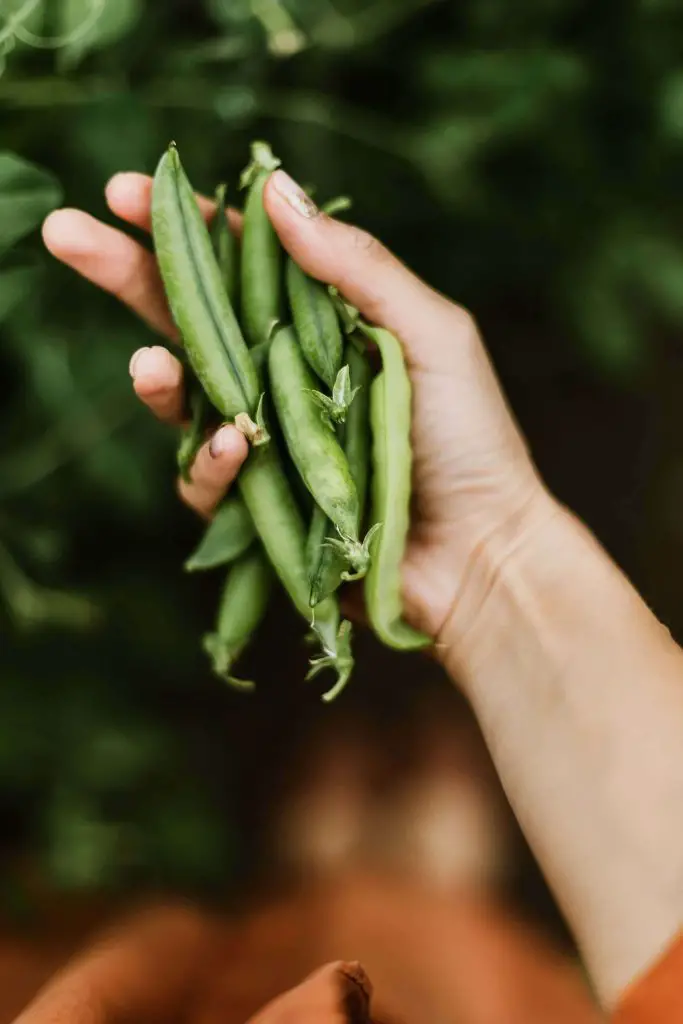
5. Pepper
Pepper is a good example of what to plant next to kale. They do not compete for nitrogen with kale, which means there is enough to go around.
6. Cilantro
Also known as coriander, cilantro is also one of the kale’s companion plants. Did you know if you would let your cilantro flower, the flowers attract predatory hoverflies which is useful in getting rid of eggs laid by other insects on the kale leaf?
7. Dill
Companion plant kale with dill and you will realize that your kale is protected from many pests such as cabbage white butterflies and wasps. This happens because these pests are attracted to dill’s yellow ( and white) flowers.

Not only that, they emit a beautiful smelling fragrance.
8. Lemongrass
Lemongrass has long leaves which provide a visual distraction to potential pests. Not only that, but companion planting kale with lemongrass will also make you realize that it is actually a light feeder which means it will not compete with your kale for nutrients.
The scent of lemongrass not only masks the smell of kale but also protects it from pests like tobacco cutworms.
What Grows Well With Kale?
1. Artichokes
Artichokes are a good example of what to plant with kale just as long as you don’t place the kale underneath the artichoke. This is to ensure that the artichoke does not block the sunlight needed for kale.
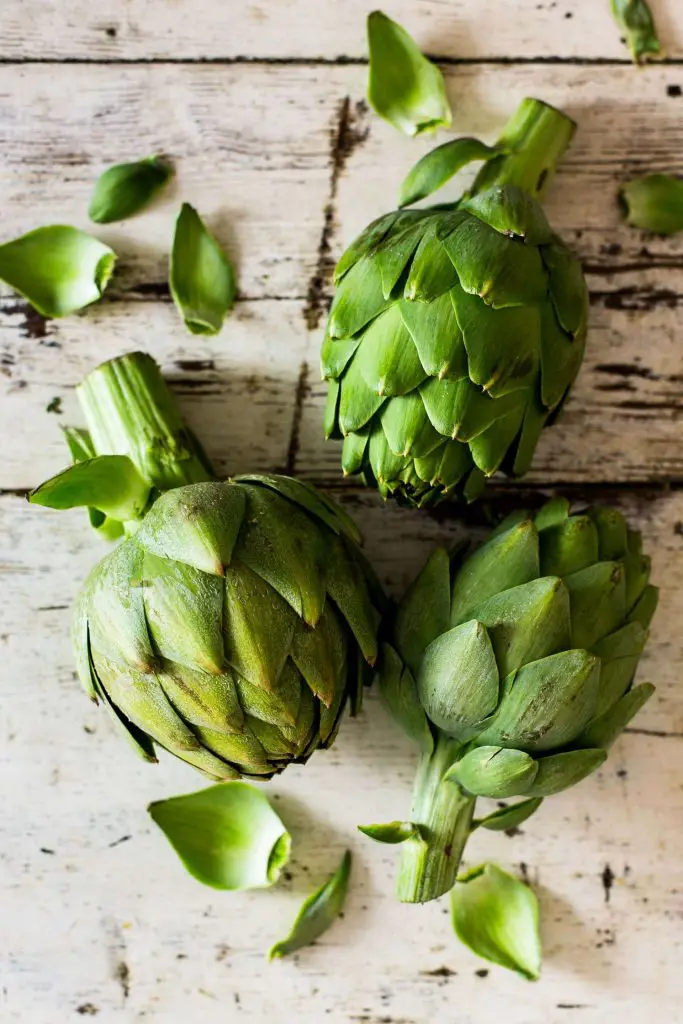
2. Beets
Beets are an example of a root crop which means it grows more underground. Companion planting kale with beets is perfect because kale is a plant that grows mainly above ground and you will get to maximize your growing space.
3. Celery
It is safe to plant leafy vegetables like celery with kale as they do not attract similar pests. They help keep cabbage white butterflies away.
4. Cucumber
Cucumbers are an amazing choice of companion plants for kale. They sprawl across your garden keeping the soil cool and preventing weeds from growing in your garden.

5. Lettuce
Lettuce is also safe to plant with kale, just like celery. As they come from different species of kale, they do not attract similar pests.
6. Potatoes
Potatoes are another example of an underground grower. Planting them with kale will ensure that your kale will not be fighting for space to grow!
FAQs On What Not To Plant With Kale
Can Kale Be Planted Near Tomatoes?
Questioning yourself, can kale be planted near tomatoes? Well, the answer is tomatoes are sometimes listed as a good companion for kale because they are part of the nightshade family.
Some may say this is not exactly good news for kale because tomatoes need more nutrients and can grow larger than kale.
Can You Plant Basil Next To Kale?
Can you plant basil next to kale? YES, you can plant basil next to kale! Pairing basil and kale are a great example of companion planting!
Kale is a robust vegetable that improves the soil nature while basil is a scented herb that repels pests.
Together they help increase their quality of growth by being planted near each other.
Can You Plant Kale With Zucchini?
I have always asked if can you plant kale with zucchini. And the answer is kale should not be planted anywhere near your zucchini plants.
This is because kale belongs to the brassica family group which normally requires lots of minerals indirectly causing your zucchini to lose its much-needed supplies.
I hope this article helps you know better what not to plant with kale because honestly, my kale started growing healthily after experimenting with a lot of other vegetables, flowers, and herbs.
Knowing the companion plants to grow with kale not only helped reduce the pest infestations in my garden, but I also reduced using chemical pesticides. It helps me sleep better at night knowing this little thing I do helps the environment in the long run.
Not only that, I have more space in my garden to grow much other vegetation and the colors I have in my garden are just phenomenal because of the flowers some of these herbs grow! I hope just as I find joy in this, you will too!
Related Posts:
- Philodendron Brasil – Top 7 Simple Care Tips [2022 Guide]
- How To Grow Tomatoes Indoors With Lights + Growing Tips! [2023]
- How To Grow Tomatoes From Seeds Without Soil? 2022 Update
- Why Is My Garlic Purple? [And Is It Better Than White Garlic?]2022
- How To Harvest Romaine Lettuce [2022 Update]
- Permaculture Gardening for Beginners – How to Get Started

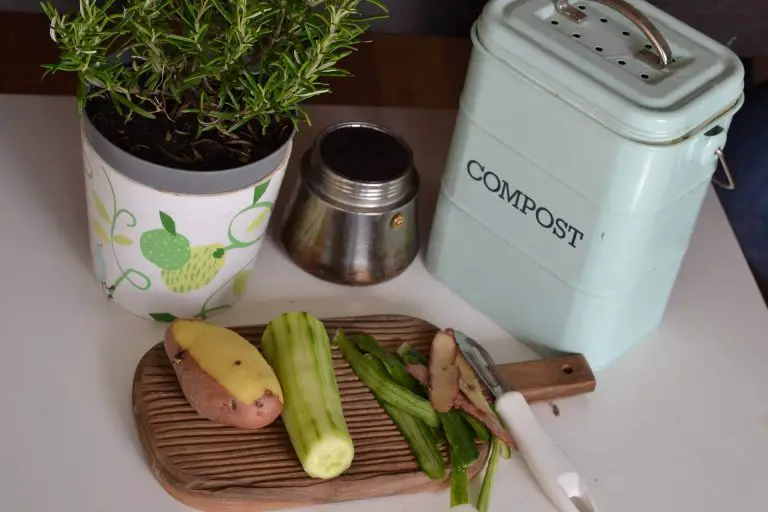
![How To Pick Mint Leaves Without Killing Plant -Exact Steps! [2023]](https://aboveandbeyondgardening.com/wp-content/uploads/2022/10/how-to-pick-mint-leaves-without-killing-plant-768x512.jpg)
![How To Harvest Kale Without Killing The Plant [What to Avoid!] 2023](https://aboveandbeyondgardening.com/wp-content/uploads/2022/10/how-to-harvest-kale-without-killing-the-plant-1-768x512.jpg)
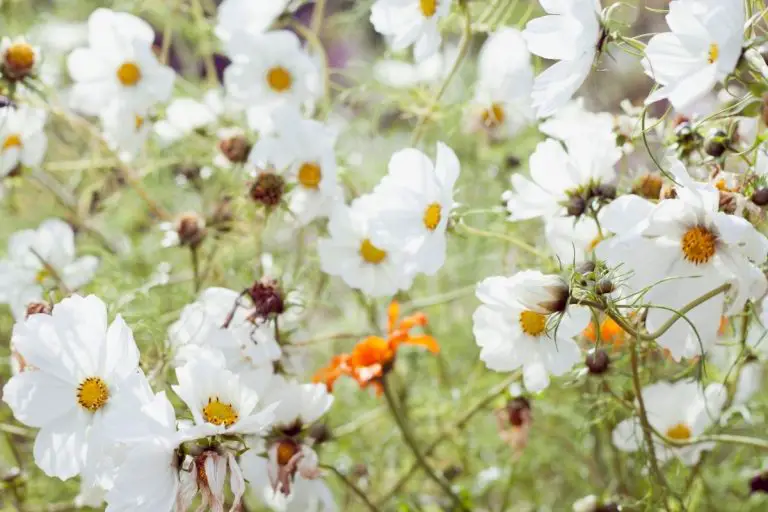
![How Cold Can Tomatoes Tolerate?[+Tips To Keep Them Juicy]](https://aboveandbeyondgardening.com/wp-content/uploads/2021/10/How-Cold-Can-Tomatoes-Tolerate-768x512.jpg)
![Aquaponic Tomatoes: How To Grow, Common Issues + Best Varieties [2022]](https://aboveandbeyondgardening.com/wp-content/uploads/2022/08/aquaponic-tomatoes-768x512.jpg)